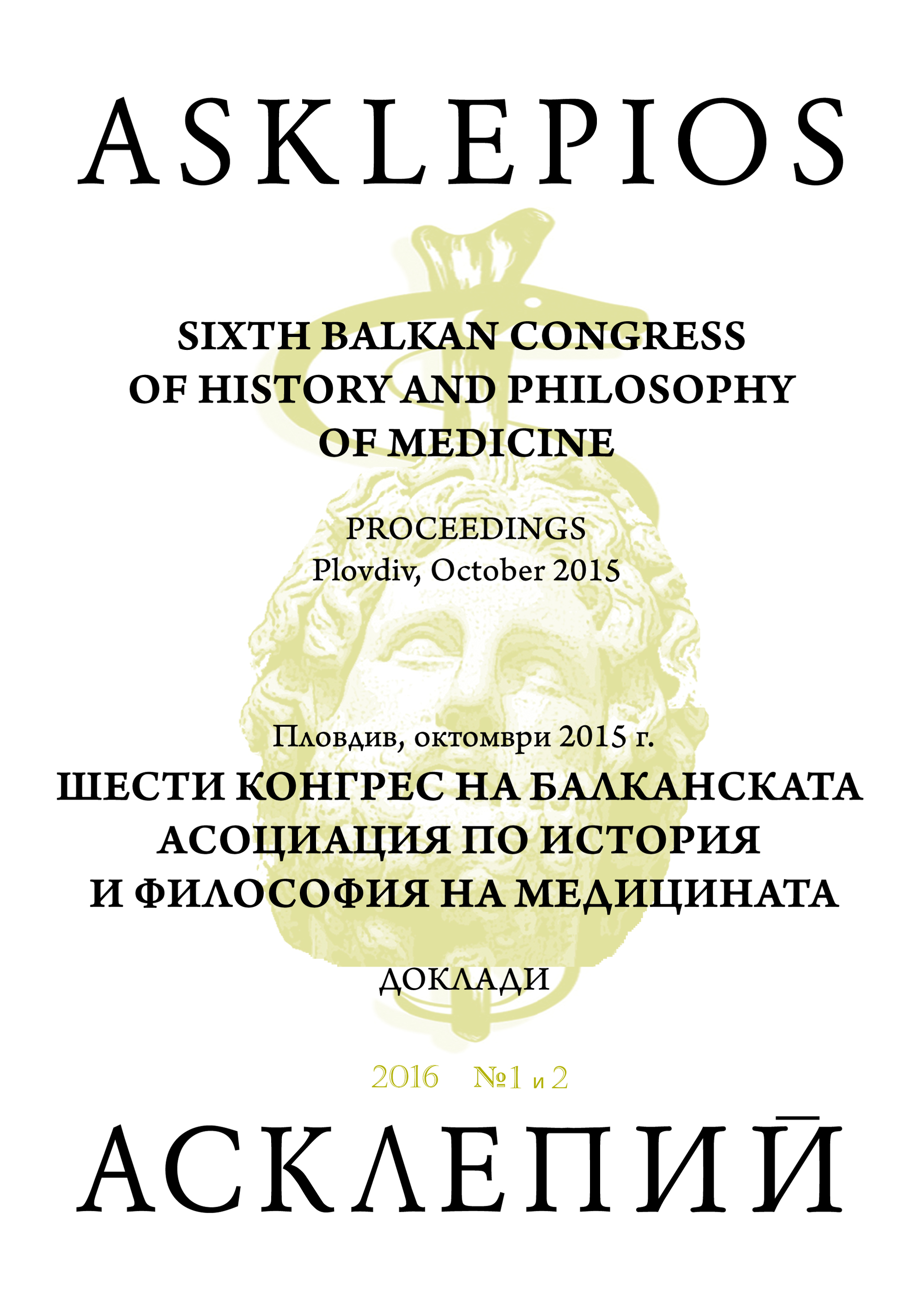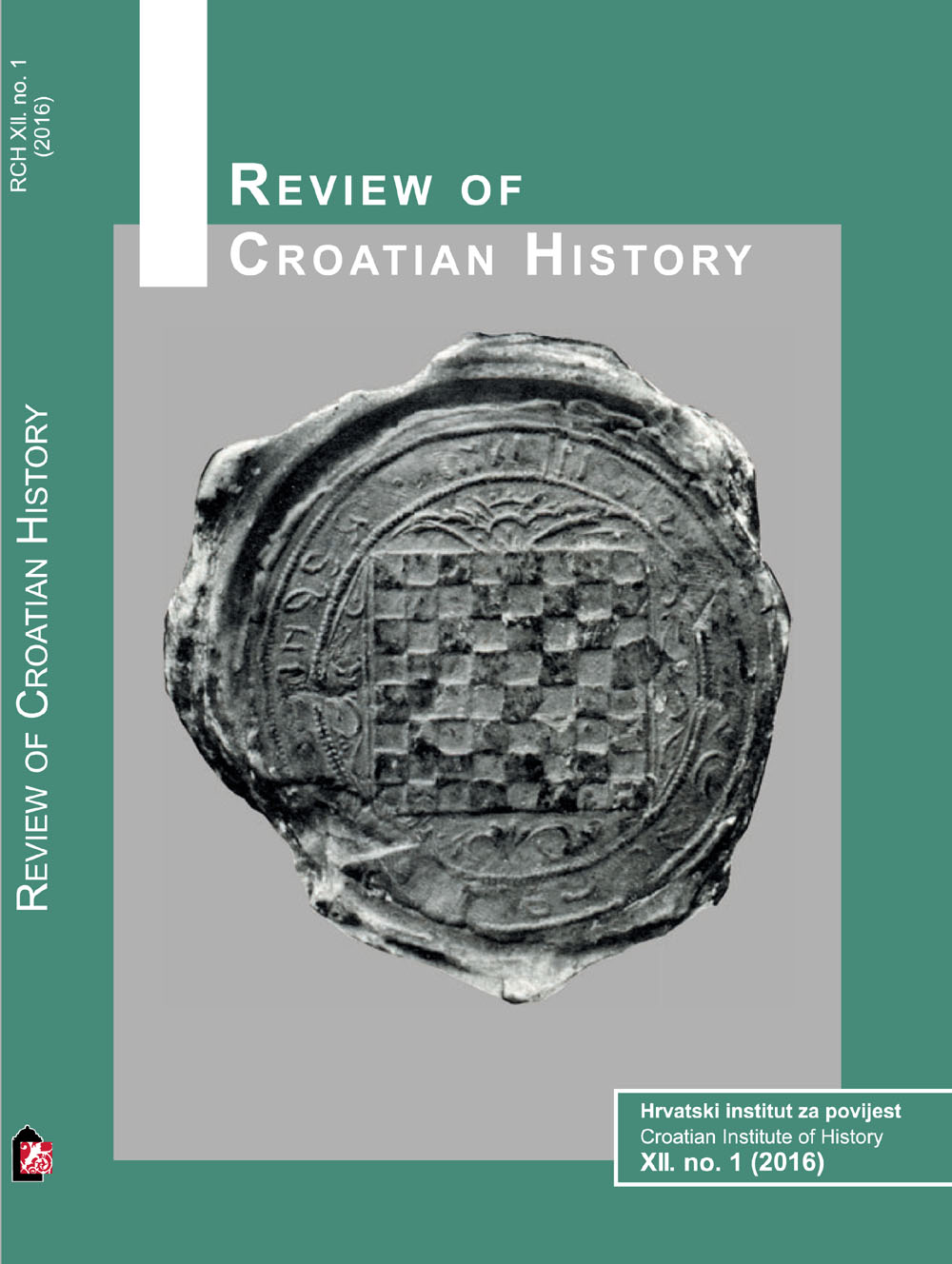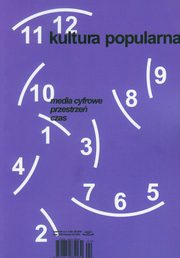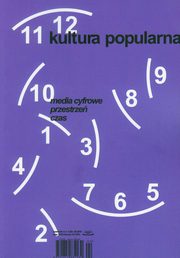
We kindly inform you that, as long as the subject affiliation of our 300.000+ articles is in progress, you might get unsufficient or no results on your third level or second level search. In this case, please broaden your search criteria.


Aim of the study: In the region of Bourgas, till the liberation from Ottoman yoke there were not regulated pharmacies. The aim of this study is to follow in historic aspect the opening and development of concession, communal pharmacies in the region of Bourgas. Materials and methods: Documentary analysis including archive materials, books and historic literature has been used. Results: There was a resistance against affirmation of communal pharmacies by the pharmacists concessionaires and by different parties as well. Beside this they managed to impose as pharmacies with humanely and social importance. The communal pharmacies has won the right for an advantage when pharmacies has been distributed for a concession. It was analyzed the health and drug delivery politics of the communes in the region of Bourgas. There were presented biographical data for the managers of these pharmacies until their nationalization during 1947–1949 accompanied by photos. Conclusion: The aim of the communal pharmacies has been to improve the drug service of the poor patients and the employees from the respective department. The results of this regional study enrich the history of the Pharmacy service in the country.
More...
Aim of the study: In the region of Bourgas, till the liberation from Ottoman yoke there were not regulated pharmacies. The aim of this study is to follow in historic aspect the opening and development of private concession, pharmacies in the region of Bourgas. Materials and methods: There was used documentary analysis including archive materials, books and historic literature. Results: Till the liberation of Bulgaria from Ottoman Yoke there were not regulated pharmacies in the region of Bourgas.The population has been treated from folk healers and ahtary – retailers. After the liberation the pharmacy activity has been reorganized by the Russion pharmacy model as it was accepted the consession pharmacy system. Conclusion: The results of this regional study enrich the history of the Pharmacy service in the country.
More...
Aim: The aim of this study is to analyse and asses the state of the pharmaceutical services in Bourgas region. It also compares them against the collected data for Bulgaria and the rest of the European countries. Materials and methods: Statistical data from European group of pharmaceutical questions and data collected from the map of pharmacies in Bulgaria. A comparative data analysis is applied. Results: The current study analyses the state of the pharmaceutical services in Bourgas region. According to the national map of pharmacies in Bulgaria, the number of pharmacies in Bourgas region is 313. The number of pharmacists is 367. Comparing the collected data from Bourgas region against the average data for Bulgaria and the rest of the European countries shows that the number of pharmacists working in a single pharmacy and the number of pharmacists for every 10 000 people is lower. Conclusion: Currently the pharmaceutical services in Bourgas region are covered by a lot of community and hospital pharmacies. Despite their number, their capacity is low. This study gives some recommendations for improvement of the pharmaceutical services in Bulgaria.
More...
The first drug stores in Bulgaria were established after The Liberation of Bulgaria from Ottoman Impire. Drug stores were regulated by „The temporary rules for medical control“ in Bulgaria from 1879. The first official law for regulating drug stores was from 1903. Based on that law drug stores was treated as commercial establishment for saling medicines, poisonous and chemical substances and medical devices. Aim: The aim of this study is to historically examine the establishment and progress of drug stores in Burgas region for the period between 1878 – 1947. Materials and methods: Historical documents and staff books. Results: In the beginning of 1908 the first drug store in Burgas was opened by Ilia Zurkov. For more than 20 years he was chairman of the Organisation of drug store owners. There were six more drug stores registreted during that time. His drug store was considered as one of the most significant drug stores in Bulgaria. There are short biographic documents for the owners of these drug stores for the period before their nationalization in 1947 – 1949. Conclusion: The results of this regional study are very important for the history of medical supply in Bulgaria.
More...
The beginning of Feldscher education dates back to 1879. Although the existence of „Temporary rules for the structure of medical management“ at that period, the Feldscher education was the first legislated medical education in Bulgaria. The necessities after the Russian-Turkish war enforced the establishment of the first schools. The education was in direct relation with the formation of the army. Its organization, the conditions and the difficulties in the preparation were being tracked. The aim of the research is to trace the appearance and the development in the Feldscher education in Bulgaria from 1879 to 1944. Documentary material was used in order thorough analysis of the first steps of the organization and the development of this specialty as an educational discipline to be made. Following the chronology of the events an accentuation was put on the organization, the difficulties and the development of the Feldscher education. Materials and methods: the survey was carried out on the basis of official historical documents which are conserved in the „Military historical archive“. Results and conclusions: the usage of historical material allowed the establishment of the student`s education to be tracked. In the beginning it was implemented on Russian model with the support of the Russian presence in the country. The schools were closed on numerous occasions as well as established when there was an acute necessity of medical staff which was supposed to serve the military forces and the Bulgarian community.
More...
After the Liberation in 1878, the restored state of Bulgaria laid the foundation of modern public healthcare. Particular attention was paid to epidemiological surveillance on socially significant infectious diseases. The efforts of all statesmen, mayors, municipal councilors created the first sanitary laws, the opening of state hospitals, municipal and city health centers. They introduced mandatory reporting of contageous (clinging) diseases, as well as the mandatory vaccination against smallpox. The measures taken to limit the spread of infectious diseases were insufficient because of shortage of medical staff, bed capacity, poor living conditions, low level of health culture of the population, and the years after the war, which was a prerequisite for the high infectious morbidity of the population in Varna region during this period. Purpose: To carry out epidemiological, retrospective, historical and logical study and analysis of socially significant infectious diseases for the period 1878 – 1944 in the region of Varna and concomitant organizational and practical anti-epidemiological and prophylactic measures. Materials and methods: The reported information about registered socially significant manageable and unmanageable infections in the region of Varna for the period 1887–1944, data about conducted immunizations for the period 1887–1944 have been found and actively explored from archival sources. The data obtained has been analyzed and presented through epidemiological, mathematical and statistical, graphical and other methods. Results: In 1884 Dr. B. Oks moved the Ospel Institute from Razgrad to Varna, which was a turning point in the development of health care in the town. The main activity of the institute was the production of anti-smallpox vaccine, its dissemination and application in Bulgaria. Vaccination in Varna was regulated in 1888–89 by a couple of orders of Kr. Mirski, the Mayor of Varna, based on the Regulation for vaccination and re-vaccination in Bulgaria (published in Official Gazette 88/1885), entitling the municipal doctors, medical paramedics, volunteer vaccinators to perform the vaccination of the population. It was compulsory the vaccination of each child before the age of one and re-vaccination at the age of 8 and 15. In March 1895 cases of disease of smallpox were registered in the town, which required the organization of general vaccination and keeping a strict record of it in the Municipal Department. Information about the incidence in Varna of acute infectious diseases by nosological units for the monitored period comes from incomplete, scarce-data tables. Epidemics of measles were registered in 1902, scarlet fever – in 1905, typhoid – in 1909, bad cough in 1910. After the year 1920 the infectious morbidity was still high. In 1924 and 1925 the morbidity of typhoid was epidemic. In 1936 immunization for typhoid was applied to 9 000 people in the region of Varna. The epidemic nature of some infectious diseases needed taking measures to protect the population. After creating the disinfection station and chemical laboratory, a bacteriological and anti-rabies station was created in 1936, in the town of Varna as well. It covers with anti-rabies vaccine all the children and adults bitten by rabid animals from the regions of Varna and Shumen.
More...
At the end of the Second World War and immediately thereafter, a powerful wave of repression and revolutionary terror ensued in all countries in Eastern Europe, including Yugoslavia and Serbia, by exploiting antifascism for the purpose of eliminating opponents of the revolution. This violence was only partially dictated by the war, the “ethos of retaliation” and even the personal motives which inevitably accompany virtually every armed conflict in history, while the major part constituted the first phase in a well-planned communist revolution which eliminated its class and political adversaries in stages. This was initially accomplished by extra-judiciary liquidations organized by the secret police, but then the primacy was assumed by show trials generally based on accusations of war crimes or some form of collaboration.
More...
This article is a presentation of the general condition of Jews in Croatia after World War II in the crucial post-war period, 1945 (with reference to previous developments) until the beginning of 1948. The main characteristic of the position of Jews in Croatia was the restoration of the Federation of Jewish communities in Belgrade and Jewish communities in Croatia, renewal of their membership in international Jewish organizations, as well at the assistance and relief provided by international Jewish organizations to the few surviving Jews in Croatia. Particular attention is given to property issues, relating both to personal property and the property of Jewish communities and organizations in Croatia. This article shows the direct link between repatriation/citizenship with the right of property restitution,as well as the series of laws which, together with penalty clauses, mandated consequential measures involving the seizure of property. Having first identified the pre-war ownership of the property, the new Yugoslav legal system created a framework to nationalize Jewish property, thus changing the property structure of the new Yugoslavia.
More...
The paper considers the image of Napoleon in N.M. Karamzin and G.R. Derzhavin’s works. N.M. Karamzin, who dedicated a sufficient number of publications to Napoleon in his literary and political journal “The Messenger of Europe” (1802 – 1803), was interested in the psychological nature of Bonaparte and admired his various talents, thereby showing a sentimentalist attitude towards the individual personality. N.M. Karamzin depicted Napoleon as a sentimentalist character with pathos and reflection. On the contrary, G.R. Derzhavin foretold the collapse of Napoleon in some of his works long before 1812, using apocalyptic symbols and literary conventionality. During the Patriotic War, N.M. Karamzin became virtually closer to G.R. Derzhavin and expressed his hatred towards the usurper through the stylistics of classicism, mostly elaborated at those times, in order to embody the civil topics.
More...
The paper analyzes new interpretations of the transition period in Russian literature of the late 17th and early 18th centuries. Special attention is given to the point of view expressed by A.I. Ivanitskii, who describes the above-said period using the term baroque classicism. The concepts of other researchers (O.M. Buranok, A.G. Gokina, and P.A. Efimova), who defined it as pre-classicism, are also considered. It is concluded that baroque classicism is characterized by the following main features: typical classical images acquire a new meaning; rational-state procedure is performed in the form of a game. The main feature of baroque is transitivity. Thus, the principles of rationalism and game are at the basis of baroque classicism.
More...
The study object of this paper is M.V. Sabashnikova’s first published poetic cycle “The Forest Pipe”. The complex analysis of poems included in the cycle makes it possible to get an understanding of M.V. Sabashnikova’s poetic world during the period of 1906–1907. As a result of the study, individual peculiarities and typical features of the epoch reflected in M.V. Sabashnikova’s poetic manner are revealed.
More...
The paper considers the poem “The Tsyganovs” by D. Samoilov (1920–1990), one of the most prominent Russian poets of the late 20th century. The work is studied in the historical and cultural contexts. Using the historical-literary and intertextual methods of analysis, the original sources of the poem are revealed. This provides an opportunity to understand the artistic intention and accept the root sense of the poem.
More...
In the 19th century, which is known as the historical age, the high degree of trust to history and the social prestige of historical science were based on the idea entrenched in the public consciousness about the continuity of historical development of human civilization and the unique opportunities for using the past experience as a means to solve problems in the present and build “the bright future”. However, understanding of the dramatic experience of the 20th century undermined the belief in the usefulness of history. This situation was greatly aggravated by the intensification of globalization processes at the turn of the 20th and 21st centuries. The problems of interaction between academic (professional) history and the general public of concrete societies, as well as changes in their relations in the context of deep social transformations turned out to be at the center of attention of many researchers. Public history purposefully overcomes alienation from “the uninitiated”, which is typical for historical science of the 20th century; it strives to restore the interest of the consumer to the production of historians, as well as to propagate professional standards, historical knowledge, and proper understanding of the specific character of “historian’s craft” among the wide circles of non-professionals.
More...
The discovery of a fresco painting cycle in the Dura-Europos synagogue raised many questions among researchers: for what reason was the Second Commandment broken here? What are the stylistic and iconographic sources of the Dura-Europos paintings? What influence might this painting cycle have exerted on later Jewish and Christian art? The paper attempts to answer these and a number of other questions. The existence of Jewish visual art is considered in the context of the revision of the general outline of Jewish history in the Mishnah’s period.
More...
Recent studies provide evidence that the southern part of the present Nizhny Novgorod region was included into the Golden Horde. It is proved archaeologically that large Golden Horde settlements existed on these lands (Kurmysh, Murzitsy). The narrative sources mention Saraklych, a Golden Horde town. The written sources trace the appearance of Tatar villages near Arzamas to the Golden Horde baskaks. The influence of Turkic-Muslim culture here was exercised through the processes taking place in the Ulus (province) of Mohshi. As a result of the decentralization in the Golden Horde and the decline of the Ulus of Mohshi, the role played by Mishar Yurt, which formed from the Ulus of Mohshi, became increasingly important since the middle of the 14th century. However, its history has been insufficiently studied.
More...
The paper describes the specifics of family relations and family law of the Kryashen Tatars in the Volga-Ural region during the 19th and early 20th century. Using a wide variety of historical and ethnographic materials, it is demonstrated that relations in the family were governed by customary law. Everyday life, customs, and festive family rituals of the rural Kryashens are studied.
More...
The text has a character of a draft – the author signals some aspects and themes of complex issues of anthropophagy and human carnivorism, placing them in historical, sociological and anthropological perspectives. As its starting point author takes black comedy Delicatessen, which characters are hungry for meat and not being able to get the animal meat they practice cannibalism. The author analysis their customs, defining the kind of cannibalism they practice and describing its significance for them as a community. She reaches for historical examples of cannibalism and recalls its ritual, social and mystical importance referring it to the situation in the movie. She enriches the whole with the reflection on the carnivorous nature of man, as a creature condemned to hunger for meat.
More...
This article has explored some of the ways through which intertextuality manifested itself in the children’s fiction of the early twentieth century. I have demonstrated that to understand e Wonderful Wizard of Oz as a case of intertextuality means understanding it in the context of the industrial rise of mass production and the emergence of new printing technologies that allowed for these intertextual connections to be made. Coloured printing, advertising, printed maps, posters, and circulated reviews in newspapers and trade papers were just some of the key mechanisms exploited by author L. Frank Baum to expand his Oz stories into tapestries of intertextual, transtextual story threads that interwove across multiple novels and other media forms. Comprehending the historical roots of prominent theoretical concepts related to intertextuality – such as the work of Kristeva, Barthes, and Caselli – thus means re -framing and re -emphasising more practical developments towards industrialisation around the turn of the twentieth century. Historicising in this way may allow us more clearly and more fully to conceptualise something like intertextuality – using history to see how it emerged, how it manifests in different contexts, and indeed how it evolves across both media and history.
More...
Accordin g to the Provinciale Geldersche en Nijmeegsche Courant’s coverage of Grünkorn’s exhibition in October 1859, the scenes from Aladdin and his wonder lamp were the most popular aspect of his show and “caught [ the audience’s ] special attention, which they deserved.” :These scenes were even more appreciated by the audience than the nationalistic scenes from royal festivities (an observation that could indicate that the late nineteenth -century audiences who went to the early kinematography shows were not necessarily as much aroused by the radically new, as with the ‘new within the old’). The audience might have liked the scenes from Aladin ou le lampe merveilluese in particular because of the double logic discussed above: on the one hand, the reels anticipated in a familiar transmedial imagination themes that were already in people’s minds, while at the same time these scenes also highlighted the specific attraction of the newly introduced device for projecting moving images. The intersection between the new and the old remains a fascinating field for study because new knowledge of the nineteenth -century popular imagination could still shed new light on the earliest encounters with the kinematograph.
More...